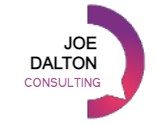Joe Dalton and Simon Haigh talk with Sandra Healy and Pedro E Ontivero about these issues on this week’s Business Eye
Diversity and Inclusion
Sandra Healy, Sandra is founding Director of the DCU Centre of Excellence for Diversity and Inclusion and founder and CEO of Inclusio software.
Pedro E Ontivero, Pedro is Project Lead, Research Centre for Excellence for Diversity and Inclusion at Dublin City University, a position he has held since February 2020.
Extra research and notes to consider
Diversity & Inclusion
Diversity and inclusion are two interconnected concepts—but they are far from interchangeable. Diversity is about representation or the make-up of an entity. Inclusion is about how well the contributions, presence and perspectives of different groups of people are valued and integrated into an environment.
An environment where many different genders, races, nationalities, and sexual orientations and identities are present but only the perspectives of certain groups are valued or carry any authority or influence, may be diverse, but it is not inclusive.
A diverse and inclusive workplace is one that makes everyone, regardless of who they are or what they do for the business, feel equally involved in and supported in all areas of the workplace.
It means understanding that each individual is unique, and recognizing our individual differences. These can be along the dimensions of race, ethnicity, gender, sexual orientation, socio-economic status, age, physical abilities, religious beliefs, political beliefs, or other ideologies.
Diversity gives you access to a greater range of talent, not just the talent that belongs to a particular world-view or ethnicity or some other restricting definition. It helps provide insight into the needs and motivations of all of your client or customer base, rather than just a small part of it.
A diverse workforce is more likely to understand your customers’ needs and come up with ideas to fulfil them. Diversity in the workplace will also increase employee morale and instil a desire to be more effective and work more efficiently. This will greatly increase the productivity of your business.
Diversity is any dimension that can be used to differentiate groups and people from one another. In a nutshell, it’s about empowering people by respecting and appreciating what makes them different, in terms of age, gender, ethnicity, religion, disability, sexual orientation, education, and national origin
Inclusion is an organisational effort and practices in which different groups or individuals having different backgrounds are culturally and socially accepted and welcomed and equally treated.
Other areas for discussion – suggested:
Does diversity work without inclusivity?
You can have the most diverse workforce but if your employees haven’t developed a mindset of inclusion, you will have an environment where people feel unable to embrace their uniqueness. Inclusion requires a person to change their beliefs and attitudes which is why it is so difficult yet so powerful when successful.
As a country, is Ireland fully diverse and inclusive?
With a multi national workforce, corporate Ireland has worked very hard to promote diversity and inclusivity but outside of the workforce, how do these efforts measure?
What holds us back and what do we need to do?
Economic growth and a low corporate tax rate attracted multi national companies and multi nationals to Ireland..
Ireland has changed for the better but many have struggled with this change. What do we need to do to fully incorporate diversity and inclusivity into society as a whole and not just the workforce?
How is diversity and inclusion being applied to our educational system?
Teaching for diversity refers to acknowledging a range of differences in the classroom. Teaching for inclusion signifies embracing difference. Teaching for equity allows the differences to transform the way we think, teach, learn and act such that all experiences and ways of being are handled with fairness and justice.
